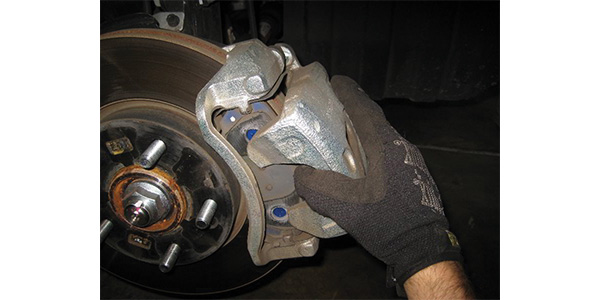Many techs believe that installing new pads and rotors is the solution to brake noise and vibration, and that installing new parts makes everything perfectly aligned so that no other steps are needed to bring the system back to service. Well, this is true and false.
In a perfect world, new brake parts such as rotors and pads should bring the vehicle back to factory condition. Right? The fact is that not all rotors are created equal, and unless you’re replacing the hub bearing as well, then you may be creating a problem for your shop in the form of a comeback. You’ll be sending the customer down the road thinking that you did a great job and your quality work will keep their vehicle working in top shape for many miles to come. But the bearing hub had some runout and so did the rotors. Did you measure the runout on the rotors after you installed them?
There are a few things a shop can do to keep the dreaded comeback from happening. And, you can start by making a policy that all of your techs must check for runout after installing any rotor, whether it has been machined or it is brand new.
With the cost of new rotors being more affordable for many customers these days, it’s easy to think that installing new rotors is the simple solution to runout issues. But we’ve seen tests that show some rotors have more runout than others when they are new. This issue is not a characteristic of any particular brand, but there are differences in manufacturing processes. In some cases, you can index the rotor on the bearing flange to the lowest point of runout, and it may fall within specifications. However, that may not be enough. A best practice is to check the runout in the flange when the rotor is removed. While it may add a few extra steps and time to the job, it will be well worth the peace of mind to know that the rotors and calipers are trued and ready for thousands of miles of trouble-free use.
Brake pads and rotors are critical to the ABS function as the system uses the hub and rotor to control traction and stability systems. If these components are not functioning to factory standards, some of the functions will no longer operate and a DTC code may be set. Shops should pay extra attention to any late-model vehicle when performing brake repairs to make sure all of the systems are set within factory tolerances.
New vehicle brake systems are more prone to stacked tolerances in the knuckle-to-bearing and hub-to-rotor assemblies. On older, high-mileage vehicles, rust and corrosion can lead to runout and disc thickness variation (DTV), as well. Aftermarket rotors that don’t have the same mass or composite makeup as the OE rotors can include less of the dampening characteristics that minimize dynamic instabilities. If the cooling fin pattern is spread out too much, for example, heat may concentrate at specific points of the rotor. This can change the coefficient of friction when the rotor gets up to temperature and can lead to DTV and noise.
Shops that use an on-the-car lathe can reduce runout issues since the rotor is machined on the same operating plane as the hub. While it may not be the most productive to have to machine new rotors, it is a lot more cost-effective than a comeback. One thing to remember with any lathe: you need to have sharp bits and the right feed rate. Machining a rotor too fast will reduce the quality of the surface and potentially create chatter. A rule of thumb for machining is the bigger the piece, the slower the feed.
Being able to measure and machine rotors properly is an essential task for any shop that performs brake work. If your comebacks are starting to creep up on late-model vehicles, it may be time to invest in equipment and training to help turn that around before your customer decides to go to the shop down the street.
Brendan Baker














